Abstract
Methylocystis parvus OBBP, an obligate methylotroph originally isolated as a methane-utilizing bacterium, was cultivated on methanol as a sole source of carbon. After adaptation to high methanol levels, this organism grew on methanol with a maximum specific growth rate of 0.65 h−1. The pH optimum for growth was between 7 and 9, and the temperature optimum was between 30 and 37°C. Methanol concentrations higher than 5% (by weight) were toxic. Formaldehyde, at a concentration greater than 1 mM, inhibited growth. Formate was neither a substrate nor an inhibitor. An extracellular viscous heteropolysaccharide was produced during growth. The maximum production of the total biomass was 14.5 g (dry weight) per liter of broth. The dried biomass contained 22% (wt/wt) crude protein and 62% (wt/wt) polysaccharide. The main components of the polysaccharide were d-glucose (82%) and l-rhamnose (14%).
Full text
PDF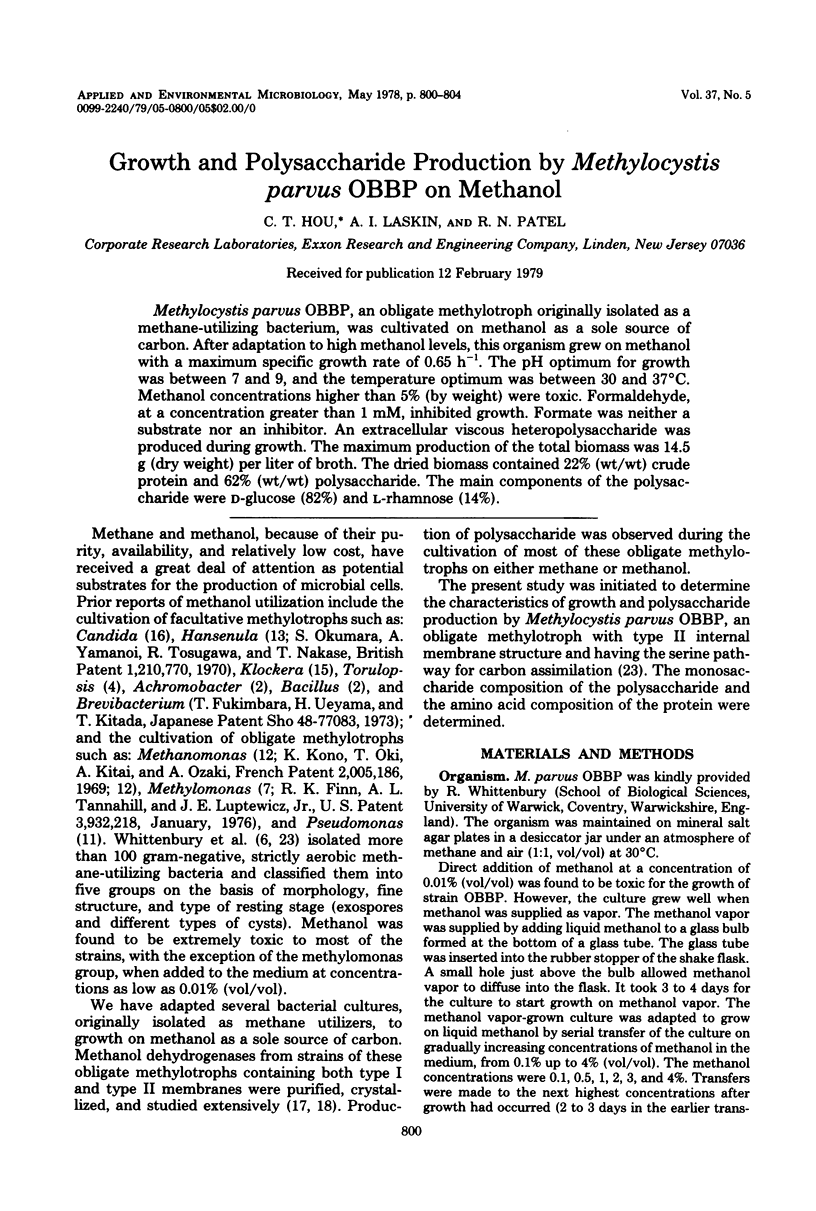
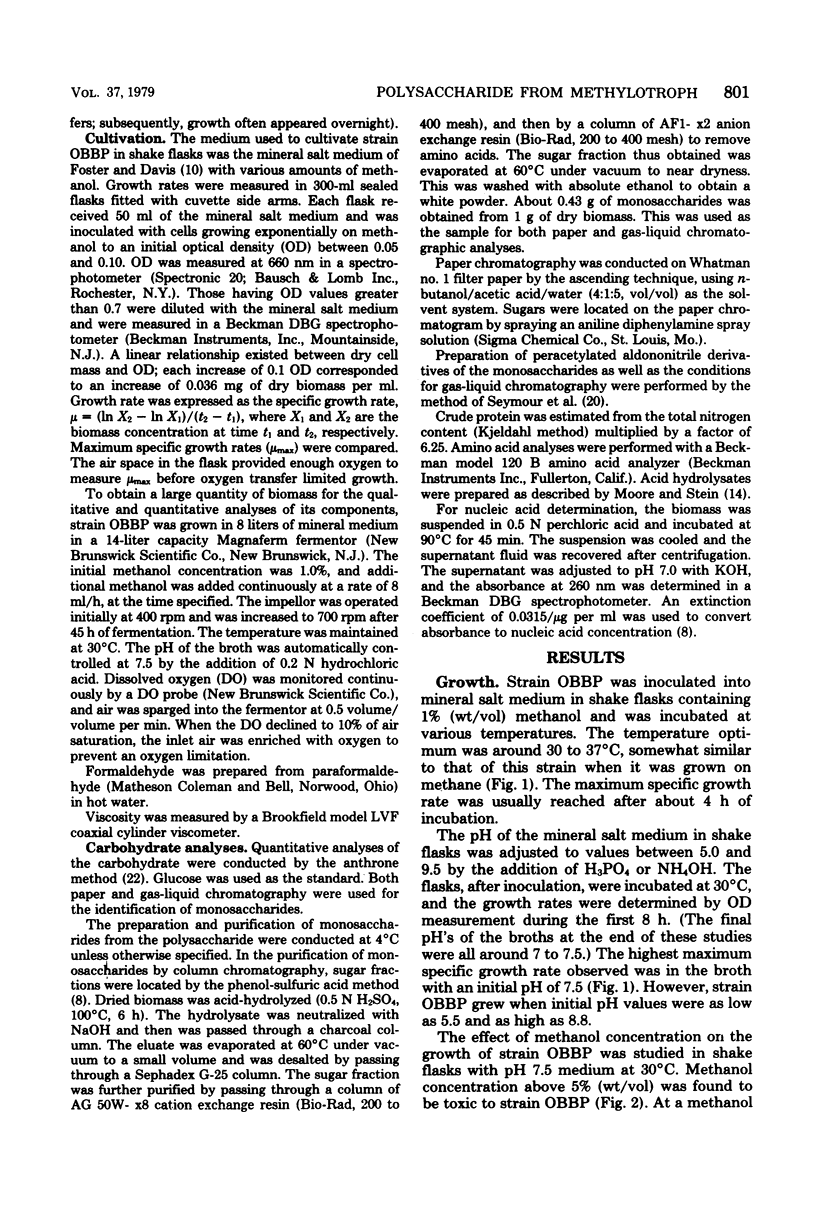
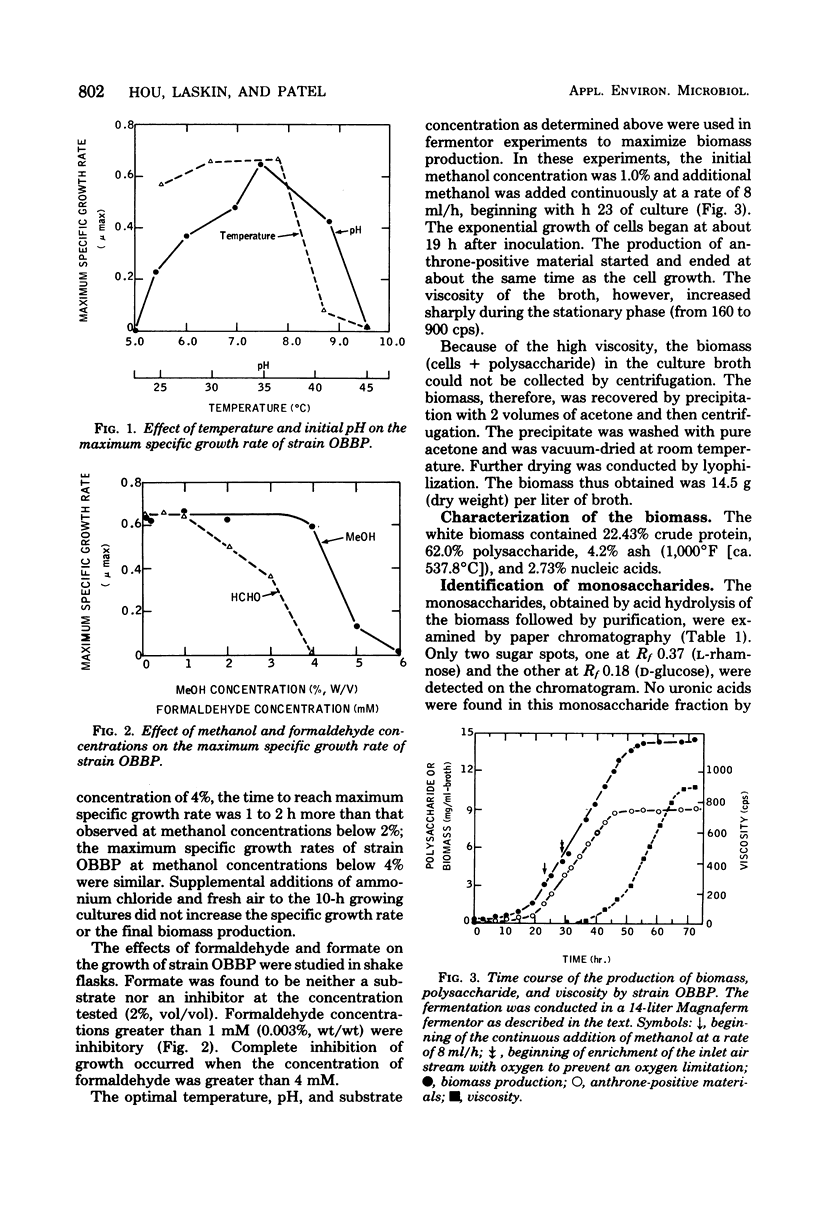
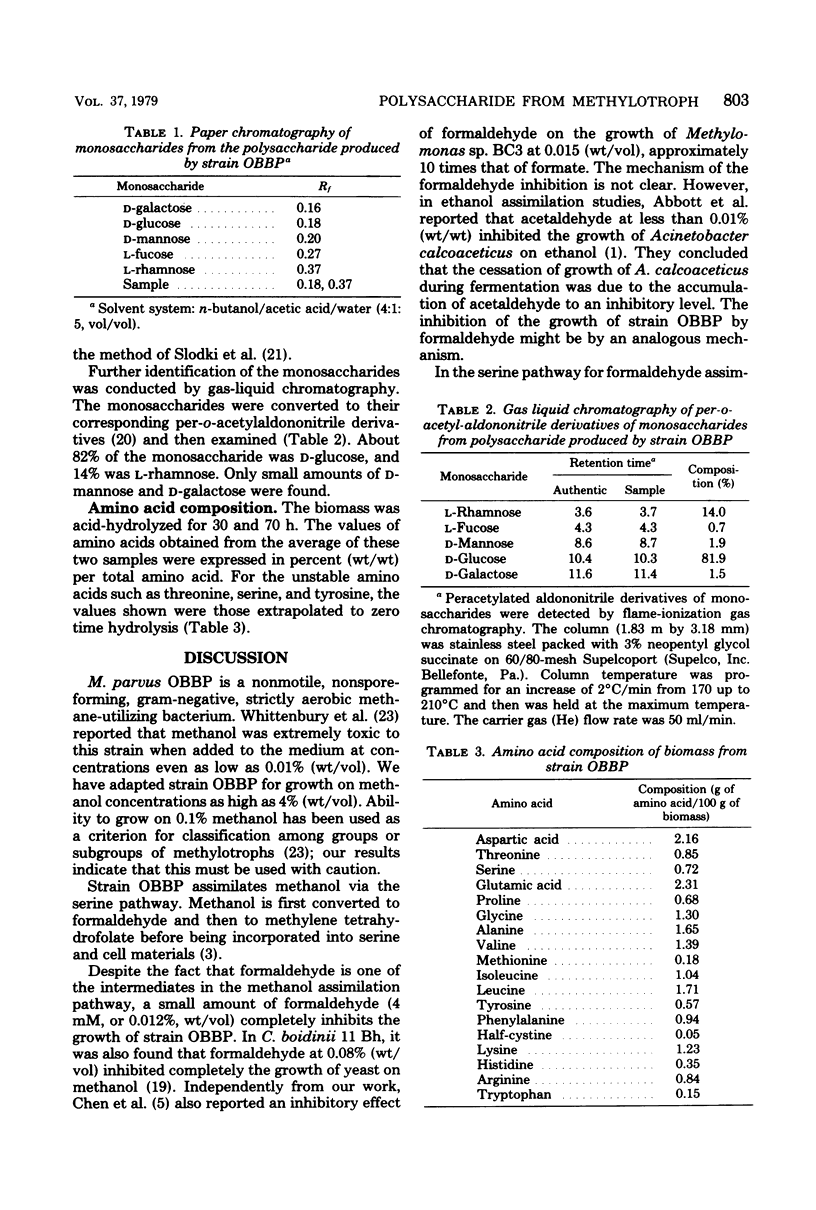
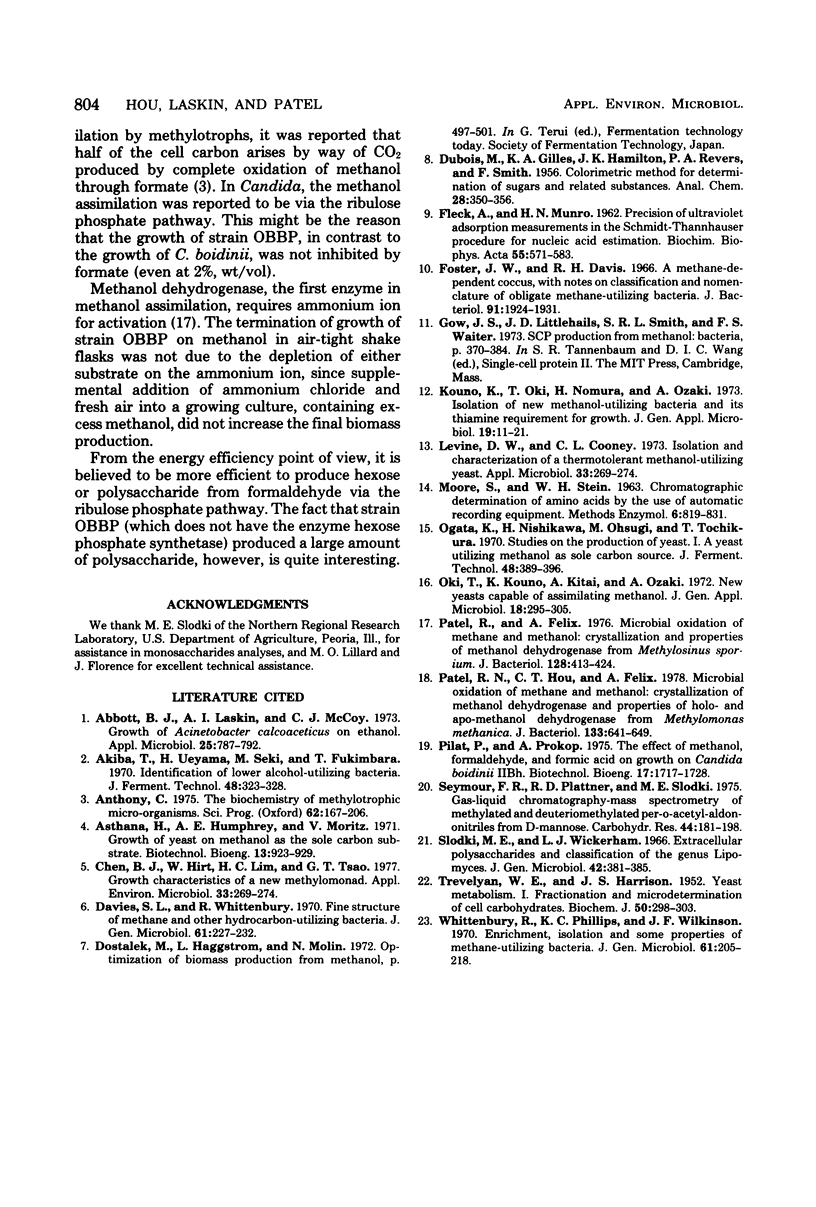
Selected References
These references are in PubMed. This may not be the complete list of references from this article.
- Abbott B. J., Laskin A. I., McCoy C. J. Growth of Acinetobacter calcoaceticus on ethanol. Appl Microbiol. 1973 May;25(5):787–792. doi: 10.1128/am.25.5.787-792.1973. [DOI] [PMC free article] [PubMed] [Google Scholar]
- Anthony C. The biochemistry of methylotrophic micro-organisms. Sci Prog. 1975 Summer;62(246):167–206. [PubMed] [Google Scholar]
- Chen B. J., Hirt W., Lim H. C., Tsao G. T. Growth characteristics of a new methylomonad. Appl Environ Microbiol. 1977 Feb;33(2):269–274. doi: 10.1128/aem.33.2.269-274.1977. [DOI] [PMC free article] [PubMed] [Google Scholar]
- Davies S. L., Whittenbury R. Fine structure of methane and other hydrocarbon-utilizing bacteria. J Gen Microbiol. 1970 May;61(2):227–232. doi: 10.1099/00221287-61-2-227. [DOI] [PubMed] [Google Scholar]
- FLECK A., MUNRO H. N. The precision of ultraviolet absorption measurements in the Schmidt-Thannhauser procedure for nucleic acid estimation. Biochim Biophys Acta. 1962 May 14;55:571–583. doi: 10.1016/0006-3002(62)90836-3. [DOI] [PubMed] [Google Scholar]
- Foster J. W., Davis R. H. A methane-dependent coccus, with notes on classification and nomenclature of obligate, methane-utilizing bacteria. J Bacteriol. 1966 May;91(5):1924–1931. doi: 10.1128/jb.91.5.1924-1931.1966. [DOI] [PMC free article] [PubMed] [Google Scholar]
- Patel R. N., Felix A. Microbial oxidation of methane and methanol: crystallization and properties of methanol dehydrogenase from Methylosinus sporium. J Bacteriol. 1976 Oct;128(1):413–424. doi: 10.1128/jb.128.1.413-424.1976. [DOI] [PMC free article] [PubMed] [Google Scholar]
- Patel R. N., Hou C. T., Felix A. Microbial oxidation of methane and methanol: crystallization of methanol dehydrogenase and properties of holo- and apomethanol dehydrogenase from Methylomonas methanica. J Bacteriol. 1978 Feb;133(2):641–649. doi: 10.1128/jb.133.2.641-649.1978. [DOI] [PMC free article] [PubMed] [Google Scholar]
- Pilát P., Prokop A. The effect of methanol, formaldehyde, and formic acid on growth of Candida boidinii 11 Bh. Biotechnol Bioeng. 1975 Dec;17(12):1717–1728. doi: 10.1002/bit.260171203. [DOI] [PubMed] [Google Scholar]
- Slodki M. E., Wickerham L. J. Extracellular polysaccharides and classification of the genus Lipomyces. J Gen Microbiol. 1966 Mar;42(3):381–385. doi: 10.1099/00221287-42-3-381. [DOI] [PubMed] [Google Scholar]
- TREVELYAN W. E., HARRISON J. S. Studies on yeast metabolism. I. Fractionation and microdetermination of cell carbohydrates. Biochem J. 1952 Jan;50(3):298–303. doi: 10.1042/bj0500298. [DOI] [PMC free article] [PubMed] [Google Scholar]
- Whittenbury R., Phillips K. C., Wilkinson J. F. Enrichment, isolation and some properties of methane-utilizing bacteria. J Gen Microbiol. 1970 May;61(2):205–218. doi: 10.1099/00221287-61-2-205. [DOI] [PubMed] [Google Scholar]


